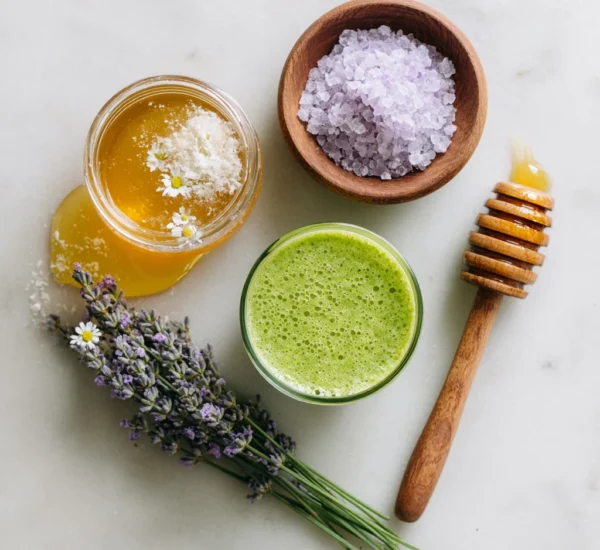Creating a Calm Corner in Any Home: Your Sanctuary Awaits
In today’s fast-paced world, having a dedicated space to unwind and de-stress is more important than ever. A calm corner provides a refuge from the chaos, a place to recharge, and a sanctuary to find inner peace. Whether you live in a sprawling mansion or a cozy apartment, creating a calm corner is achievable and can significantly improve your well-being. This guide will walk you through the steps to design your own personal oasis, regardless of your space or budget.
Defining Your Calm: Understanding Your Needs
Before you start rearranging furniture, take some time to reflect on what “calm” means to you. What activities help you relax? What sensory experiences bring you joy? Understanding your personal needs is crucial for creating a space that truly resonates with you.
Identifying Your Stress Triggers
Start by identifying the things that contribute to your stress and anxiety. Is it the constant barrage of notifications, the mess in your home office, or the lack of natural light? Once you pinpoint these triggers, you can consciously design your calm corner to counteract them. For example, if noise is a major stressor, consider investing in noise-canceling headphones or soundproofing materials.
Exploring Relaxation Techniques
Think about the activities that help you relax and incorporate them into your calm corner. Do you enjoy reading, meditating, practicing yoga, or listening to music? Consider the space you need for these activities and incorporate the necessary equipment, such as a comfortable chair, a yoga mat, or a sound system. If you like to write, include a journal and pen. If you find art therapeutic, set up a small easel with paints and brushes. The goal is to create a space that encourages your preferred relaxation techniques.
Considering Your Sensory Preferences
Sensory experiences play a significant role in creating a calm and inviting atmosphere. Consider your preferences for light, sound, scent, and texture. Do you prefer soft, ambient lighting or natural sunlight? Do you find soothing music or nature sounds relaxing? Are you drawn to calming scents like lavender or chamomile? Incorporate elements that appeal to your senses to create a space that is truly restorative. Soft blankets, comfortable pillows, and textured rugs can add to the sensory experience.
Choosing the Right Location: Finding Your Sanctuary
Selecting the right location is paramount for creating a successful calm corner. The ideal spot should be relatively quiet, free from distractions, and easily accessible. Consider the following factors when choosing your location:
Minimizing Distractions
Choose a location that is away from high-traffic areas and potential distractions. Avoid placing your calm corner near the television, computer, or other electronic devices. Ideally, the space should be visually separate from the rest of the room, perhaps tucked away in a corner or behind a screen. The goal is to create a sense of enclosure and separation from the outside world.
Maximizing Natural Light
Natural light has been proven to boost mood and reduce stress. If possible, choose a location near a window that offers plenty of natural light. If natural light is limited, consider using full-spectrum light bulbs to mimic the effects of sunlight. Avoid harsh overhead lighting, which can be jarring and create a feeling of unease.
Considering Space Constraints
Even if you have limited space, you can still create a calming corner. Look for underutilized areas in your home, such as a spare bedroom corner, a hallway alcove, or even a section of your bedroom. Get creative with space-saving solutions, such as wall-mounted shelves, folding chairs, and multi-functional furniture. Remember that the size of the space is less important than the intention behind it.
Designing Your Calm Corner: Creating a Soothing Ambiance
Once you have chosen your location, it’s time to design your calm corner to create a soothing and inviting atmosphere. This involves selecting the right colors, furniture, décor, and sensory elements.
Color Psychology
Colors have a powerful impact on our emotions and mood. Choose colors that promote relaxation and calmness, such as blues, greens, and neutrals. Avoid bright, stimulating colors like red and yellow, which can increase anxiety. Soft, muted tones are generally more conducive to relaxation. Consider painting the walls a calming color or incorporating it through textiles and accessories.
Comfortable Furniture
Comfort is key when it comes to creating a calm corner. Invest in comfortable furniture that encourages relaxation. A cozy armchair, a plush rug, and soft pillows can transform a space into a haven of tranquility. Consider the ergonomics of your furniture to ensure that it supports your body and promotes good posture. Avoid furniture that is too stiff or uncomfortable.
Decorative Elements
Incorporate decorative elements that bring you joy and promote a sense of peace. Natural elements like plants, stones, and wood can add a grounding and calming effect. Artwork, photographs, and other personal items can also create a more inviting and personalized space. Avoid clutter and keep the space clean and organized to minimize distractions.
Sensory Integration
Engage your senses to create a truly immersive and restorative experience. Incorporate elements that appeal to your sense of sight, sound, smell, and touch. Use soft lighting, soothing music, calming scents, and textured materials to create a multi-sensory environment. Consider adding a water fountain for the gentle sound of flowing water or an aromatherapy diffuser for a calming fragrance.
Maintaining Your Calm Corner: Preserving Your Sanctuary
Creating a calm corner is just the first step. To truly reap the benefits, you need to maintain it as a sacred space and protect it from clutter and distractions.
Establishing Boundaries
Set clear boundaries with yourself and others to protect your calm corner from intrusions. Inform family members or housemates that this space is off-limits during certain times or for certain activities. Turn off notifications on your phone and avoid bringing work-related materials into the space. The goal is to create a clear separation between your calm corner and the rest of your life.
Regular Cleaning and Decluttering
Clutter can be a major source of stress and anxiety. Make it a habit to regularly clean and declutter your calm corner. Remove any unnecessary items, organize your belongings, and dust the surfaces. A clean and organized space is more conducive to relaxation and peace of mind.
Incorporating Rituals
Establish rituals to help you transition into a state of relaxation when you enter your calm corner. Light a candle, brew a cup of tea, or play some soothing music. These rituals can serve as cues to your mind and body that it’s time to unwind and de-stress. The more consistently you practice these rituals, the more effective they will become.
Regular Use and Reflection
Make a conscious effort to use your calm corner regularly. Even just a few minutes of relaxation each day can make a significant difference in your overall well-being. Take the time to reflect on your experiences in your calm corner and adjust the space as needed to better suit your needs. Your calm corner should be a dynamic and evolving space that grows with you.
Examples
Here are some inspiring examples of what a calm corner might include based on specific relaxation goals:
- Meditation Nook: A comfortable cushion, a meditation timer, and a small altar with meaningful objects. Essential oils like sandalwood or frankincense can enhance the meditative experience.
- Reading Retreat: A cozy armchair, a soft blanket, a reading lamp, and a bookshelf filled with your favorite books. Consider adding a small table for your tea or coffee.
- Creative Haven: An easel, paints, brushes, a sketchpad, and a comfortable chair. Natural light is essential for creative pursuits.
- Nature Escape: Potted plants, a small water feature, and a comfortable chair. Consider adding a bird feeder outside the window to attract birds.
- Yoga Zone: A yoga mat, blocks, straps, and a comfortable cushion. A mirror can help you improve your form.
Frequently Asked Questions (FAQ)
Q: Where is the best place to put a calm corner in my house?
A: The best place is typically a quiet, unused space away from high-traffic areas. Corners of bedrooms, spare rooms, or even a hallway alcove can work well. Aim for a spot with minimal distractions and, ideally, some natural light.
Q: What should I put in a calm corner?
A: Comfortable seating (like a chair or cushion), soft textiles (blankets, pillows), calming colors, elements that appeal to your senses (plants, candles, essential oils), and items that promote relaxation (books, journals, meditation aids).
Q: How do I make my calm corner cozy?
A: Use soft textures, warm lighting (fairy lights or a salt lamp), and comforting colors. Add personal touches that bring you joy, such as photos or artwork. Ensure the space is clean, organized, and free of clutter.
Q: How do you decorate a chill zone?
A: Focus on creating a relaxing ambiance with calming colors, comfortable furniture, and elements that appeal to your senses. Incorporate natural elements, like plants or stones. Keep the space organized and clutter-free. Personalize it with items that bring you joy and promote relaxation.
Q: How can I create a calm corner on a budget?
A: Repurpose existing furniture, use inexpensive textiles, and incorporate natural elements like branches or stones. DIY projects, like painting a calming mural or creating a simple meditation cushion, can also save money. Focus on creating a peaceful atmosphere rather than buying expensive items.



